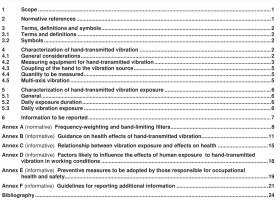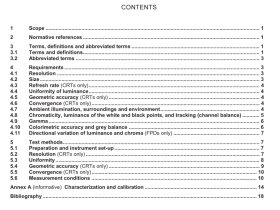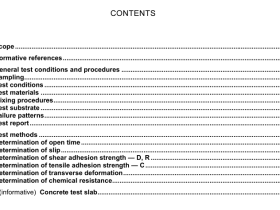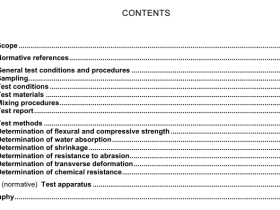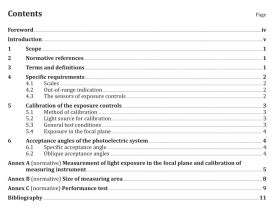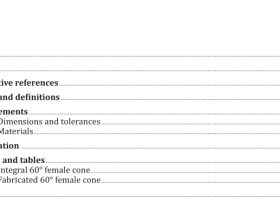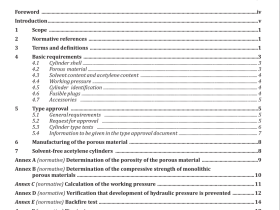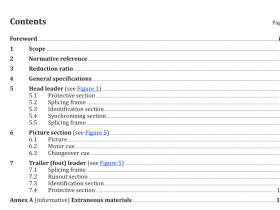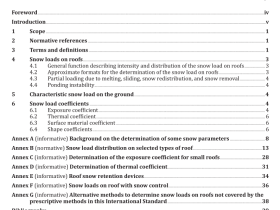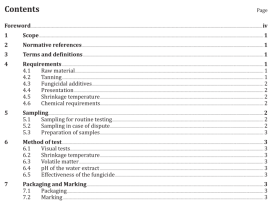ISO 10370 pdf download
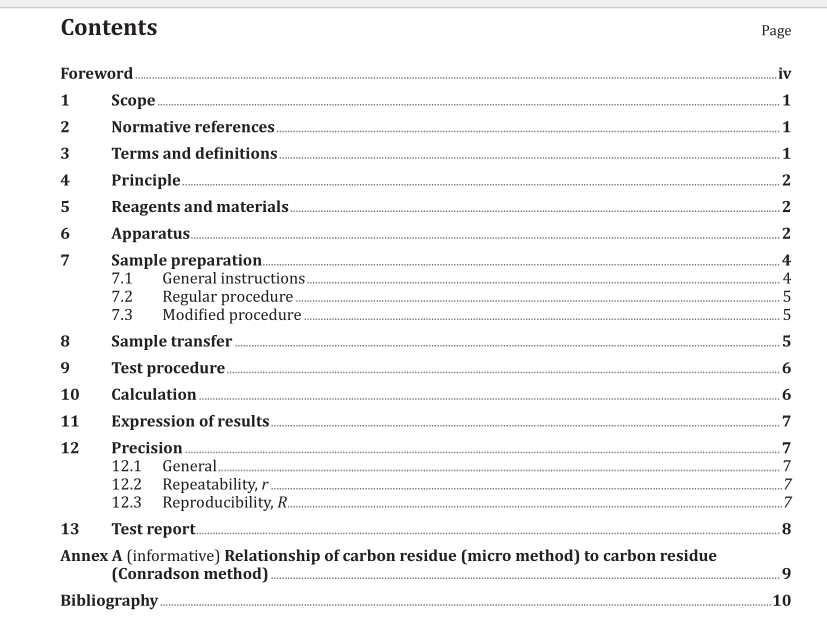
ISO 10370 pdf download Petroleum products — Determination of carbon residue — Micro method
1 Scope
This International Standard specifies a method for the determination of the amount of carbon residue,in the range 0,10 % (m/m) to 30,0 % (m/m), left after evaporation and pyrolysis of petroleum productsunder specified conditions.
NOTE 1 The carbon residue value serves as an approximation of the tendency of petroleum products toform carbonaceous deposits under similar degradation conditions, and may be useful in the assessment ofrelative carbon-forming tendencies of products within the same class. In this case, care should be taken in theinterpretation ofresults.
For products which yield a residue in excess of 0,10 % (m/m), the test results are equivalent to thoseobtained by the Conradson carbon residue test (see ISO 66151]) in the range of0,10 (m/m) to 25,0 (m/m(for details see Annex A).
This International Standard is also applicable to petroleum products which consist essentially ofdistillate material, and which may yield a carbon residue below 0,10 % (m/m). On such materials, a10 % (V/V) distillation residue is prepared by the procedure described in 7.3,1 and 7.3.2 before analvsis
Both ash-forming constituents, as defined bylS0 6245(2) and non-volatile additives present in the sampleadd to the carbon residue value and are included in the total value reported.
NOTE 2 The presence of organic nitrates incorporated in certain distillate fuels will yield abnormally highvalues for the carbon residue. The presence of alkyl nitrate in the fuel may be detected by ISO 13759.3
2 Normative references
The following documents, in whole or in part, are normatively referenced in this document and areindispensable for its application For dated references, only the edition cited applies. For undatedreferences, the latest edition of the referenced document (including any amendments) applies.ISO 3405, Petroleum products – Determination ofdistillation characteristics
3 Terms and definitions
For the purposes ofthis document, the following term and definition apply31carbon residue
the whole residue produced of a sample from the specific conditions of evaporation and pyrolysisdescribed in this International Standard
4 Principle
A weighed aliquot of the oil sample is placed in a glass vial and heated to 500 °C under an inert (nitrogen)gas stream in a controlled manner for a specific time. Volatiles formed during the reactions are sweptaway by the inert gas. The carbonaceous residue remaining is weighed.
5 Reagents and materials
5.1 Nitrogen, low oxygen content, i.e. 99,998 %(V/V) or better, with appropriate regulation to providea delivery pressure of 0 kPa to 200 kPa.
NOTEThe practical minimum delivery pressure is 140 kPa.
6Apparatus
6.1Glass sample vials, of 2 ml capacity, 12 mm outside diameter, approximately 35 mm high
A vial of 4 ml capacity, 12 mm outside diameter, approximately 72 mm high may be used with samples ofverylow carbon residue content, i.e. below approximately 0,20 % (m/m), but no precision data has beenobtained for them.
NOTE 1An interlaboratorystudy4 has been carried out bythe Energy lnstitute on the 10 % volume distillationresidue procedure for middle distillates using 4 ml vials and automatic distillation units and the precision is givenin Clause 12.
NOTE 2Aglass sample vialofapproximately 20 mlcapacity(20,5 mm to 21 mm outside diameter by (70+1)mmhigh) for samples that are expected to yield residues < 0,10 % (m/m) may also be used, so that a more appreciablemass difference mav be determined. ln this case, a5 g sample size is suggested. No precision has been determinedfor this technique, but it may be found suitable for very low 10 % residue samples.
